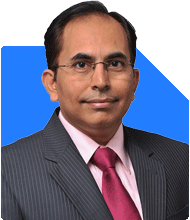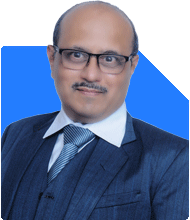Janak Patel |71 Answers |Ask -Follow
MF, PF Expert - Answered on Jul 15, 2025
He is the CEO and founder of InfiniumWealth, a firm that specialises in designing goal-specific financial plans tailored to help clients achieve their life goals.
Janak holds an MBA degree in finance from the Welingkar Institute of Management Development and Research, Mumbai, and has over 15 years of experience in the field of personal finance. ... more

Hi.i am 40 years old.i have a son in std 3.my salary is 1.1 lac per month.i have 50 lakh fd.epf 2 lakh.liquid 2.5 lakh cash.pls suggest me for retirement
You have about 15-20 years before retirement and that's a good time period to accumulate a good retirement corpus.
Your son's education will remain your priority during this period also. Assuming you can fund his education from your monthly income at least till his 10th/12 grade. You can decide on an amount for his graduation/post graduation that you want to provide to him. For example if you want to provide 10 lakhs when he is 18 years old, you will need to start investing a monthly SIP amount of 2000 in mutual funds assuming returns of 12%. So based on the amount required you can calculate the SIP amount required.
You have EPF of 2 lakhs which is not sufficient today but assuming you continue contributions and after 15 years this can be a considerable amount. But still may not be sufficient for retirement, so you can consider it as part of/contribution to your retirement.
So lets look at your FDs - you have 50 lakhs in FDs. Even at 7% interest on them you are not going to beat inflation as you will need to pay tax on the interest income.
This money has a potential to earn better returns and not just beat inflation, but also create a retirement corpus which can be sufficient for 20 years (this depends on your expenses also).
If you split this 50 lakhs and keep 5 lakhs in FDs for emergencies, you can invest the remaining 45 lakhs to create a good corpus.
If you invest 45 lakhs in Mutual funds and assuming a return of 12% over 15 years, you will have a corpus of approx. 2.70 crores.
With 15-20 years for retirement, you have an advantage to achieve your goals.
Though these numbers may look good now, they have to be evaluated with all other parameters like your monthly expenses, other goals in life, Son's education needs etc.
I recommend you consult a CFP or a fee based advisor and discuss all aspects towards a financial plan that will cover Retirement and all other goals. The Plan will help you better prepare for the future and provide alternatives and options and a clear roadmap towards achieving them. It will also cover aspects of health and life insurance.
Thanks & Regards
Janak Patel
Certified Financial Planner.
You may like to see similar questions and answers below
Ramalingam Kalirajan |10870 Answers |Ask -Follow
Mutual Funds, Financial Planning Expert - Answered on Jan 23, 2025
Nitin Narkhede | Answer |Ask -Follow
MF, PF Expert - Answered on Jan 23, 2025
Ramalingam Kalirajan |10870 Answers |Ask -Follow
Mutual Funds, Financial Planning Expert - Answered on Jun 05, 2025
Dr Dipankar Dutta |1836 Answers |Ask -Follow
Tech Careers and Skill Development Expert - Answered on Dec 05, 2025
Ulhas Joshi |280 Answers |Ask -Follow
Mutual Fund Expert - Answered on Dec 05, 2025
Dr Dipankar Dutta |1836 Answers |Ask -Follow
Tech Careers and Skill Development Expert - Answered on Dec 04, 2025
Ravi Mittal |676 Answers |Ask -Follow
Dating, Relationships Expert - Answered on Dec 04, 2025
Anu Krishna |1745 Answers |Ask -Follow
Relationships Expert, Mind Coach - Answered on Dec 04, 2025
Anu Krishna |1745 Answers |Ask -Follow
Relationships Expert, Mind Coach - Answered on Dec 04, 2025
Mayank Chandel |2562 Answers |Ask -Follow
IIT-JEE, NEET-UG, SAT, CLAT, CA, CS Exam Expert - Answered on Dec 04, 2025
Mayank Chandel |2562 Answers |Ask -Follow
IIT-JEE, NEET-UG, SAT, CLAT, CA, CS Exam Expert - Answered on Dec 04, 2025
Mayank Chandel |2562 Answers |Ask -Follow
IIT-JEE, NEET-UG, SAT, CLAT, CA, CS Exam Expert - Answered on Dec 04, 2025
Mayank Chandel |2562 Answers |Ask -Follow
IIT-JEE, NEET-UG, SAT, CLAT, CA, CS Exam Expert - Answered on Dec 04, 2025
























